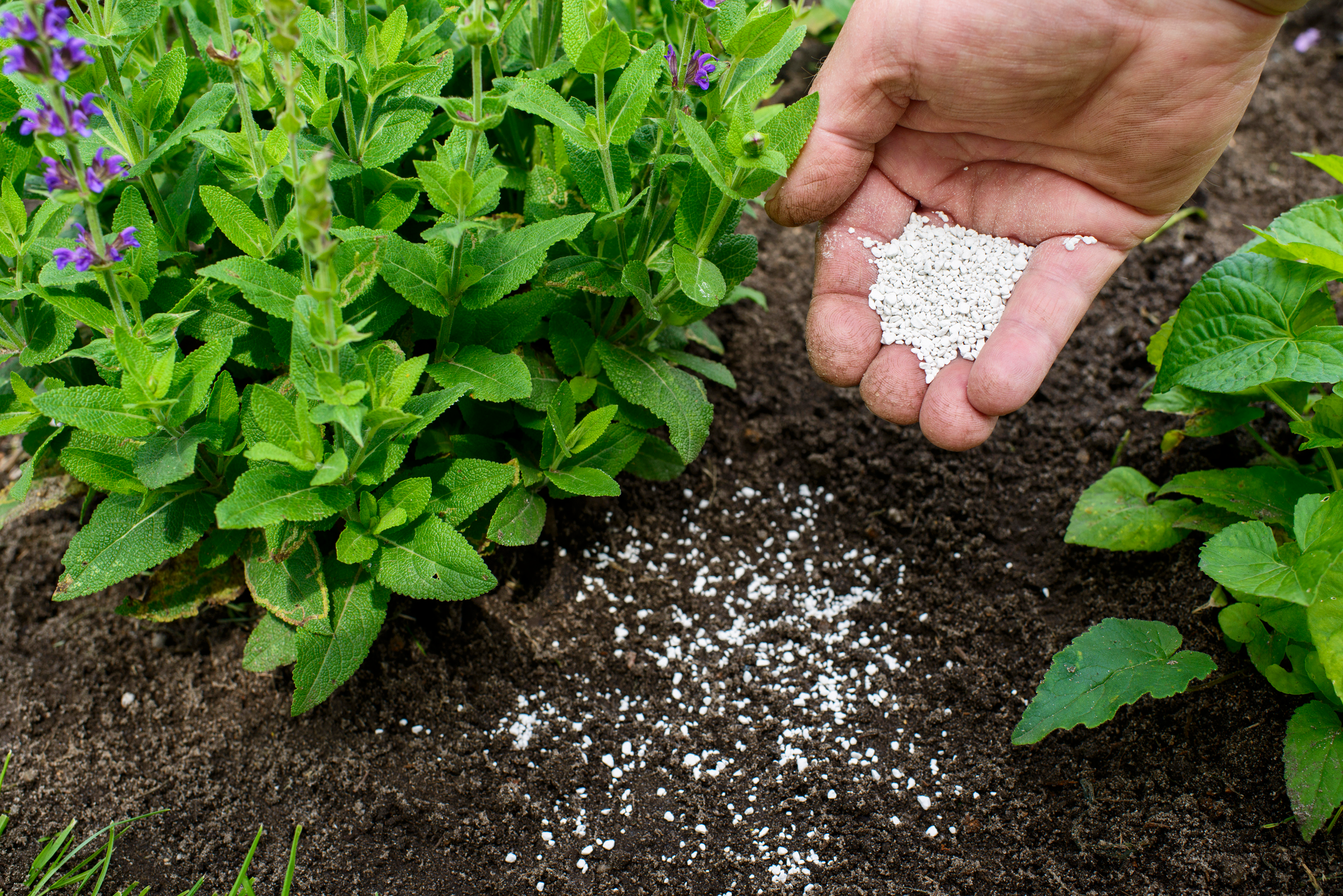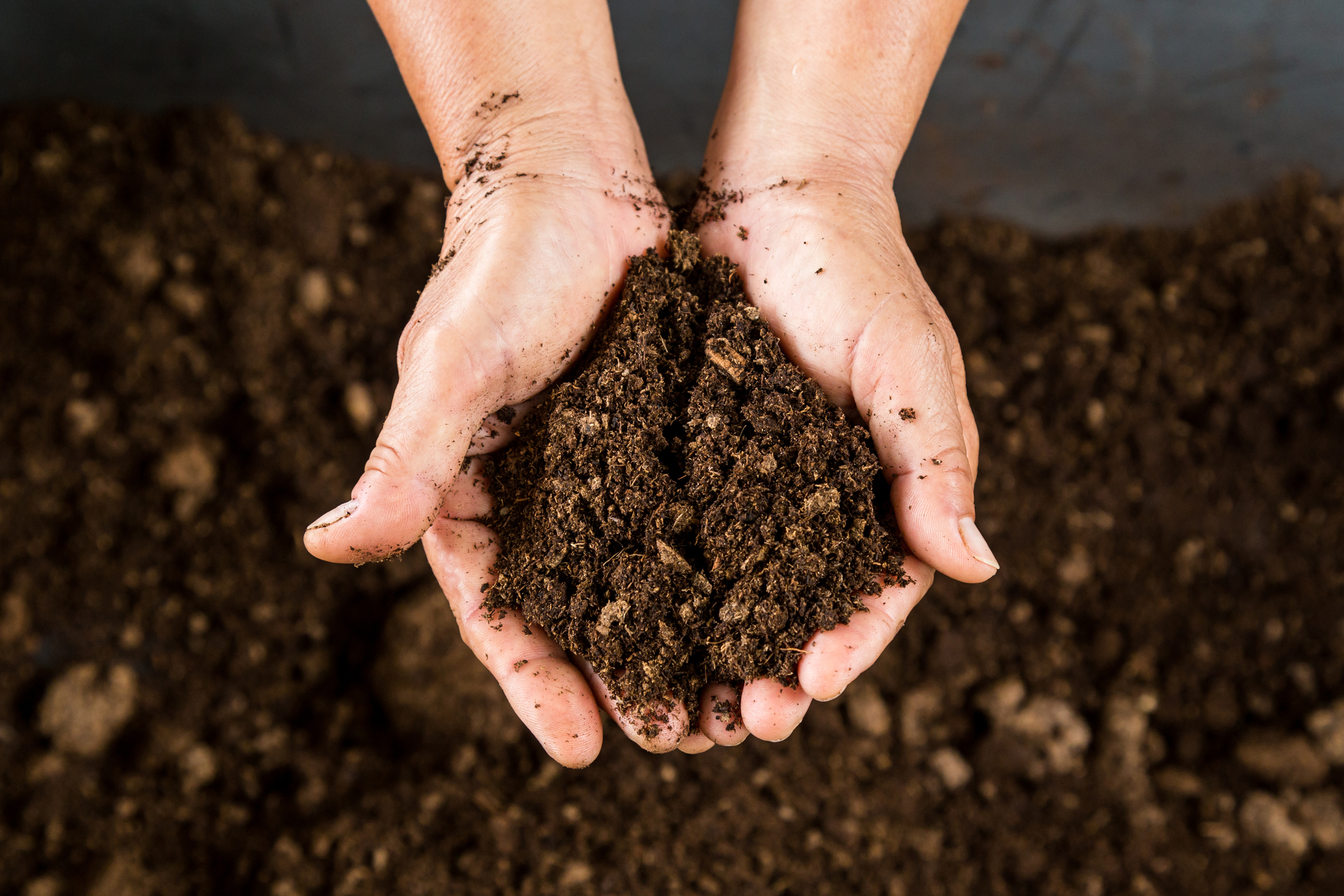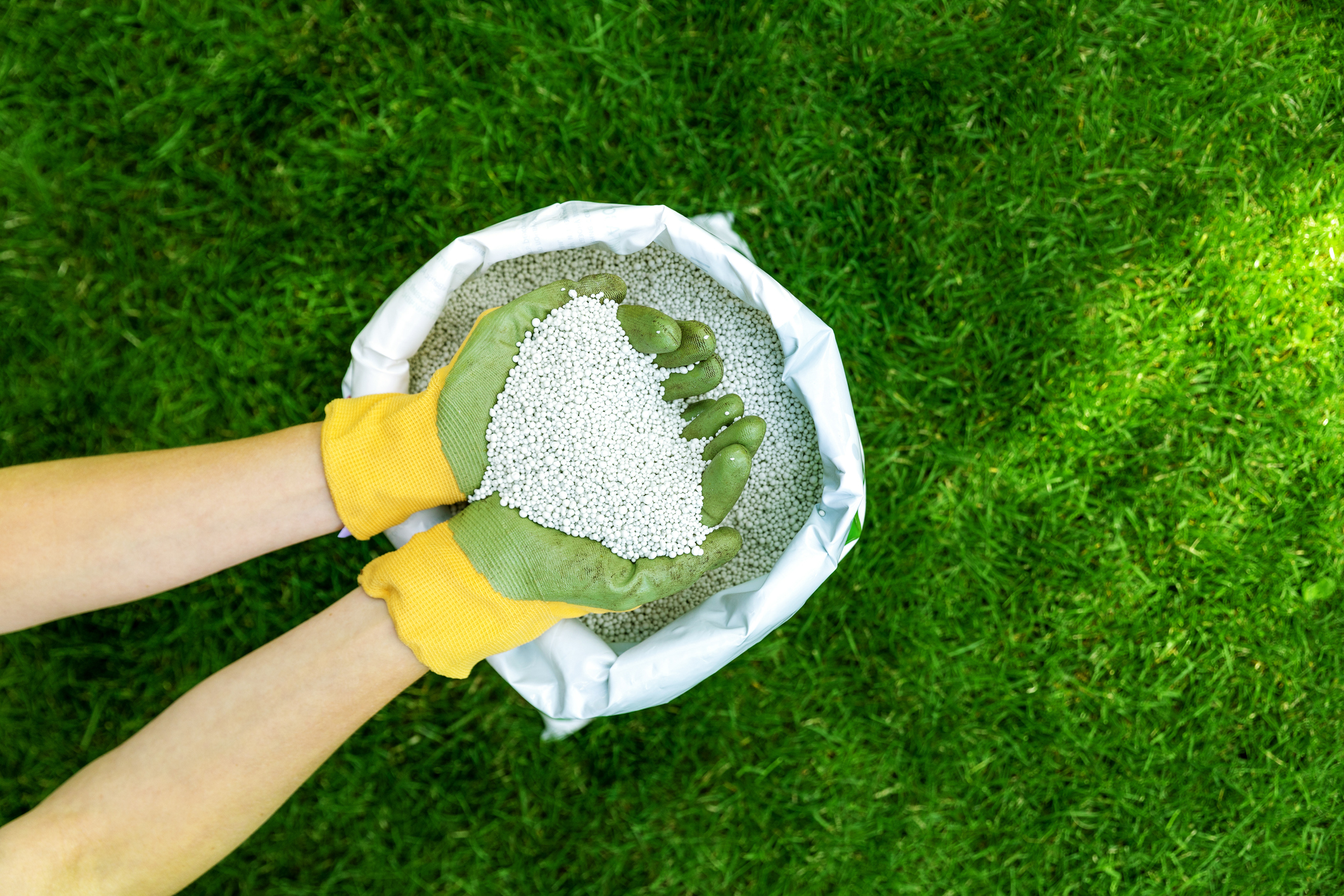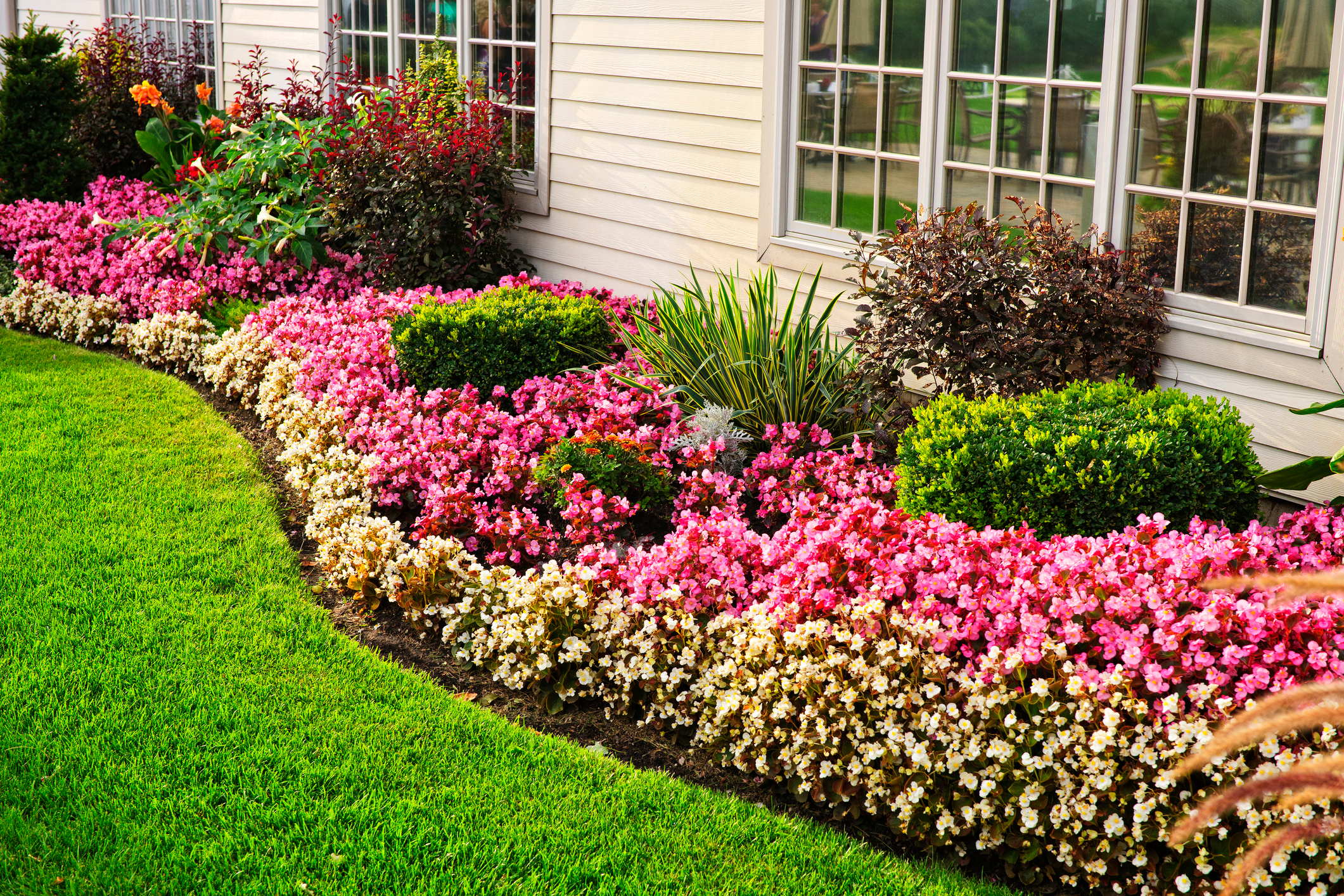When to Fertilize Flower Beds in Minnesota
When to Fertilize Flower Beds in Minnesota
Minnesota is home to some of the most beautiful landscapes, few of which are complete without a variety of flowers. Flowering plants need plant food to flourish, and their food is fertilizer. While tending to flower beds may sound easy, knowing when and how to fertilize the soil in Minnesota can be difficult.
As a business owner or property manager, you’ll want your flowers (or trees and shrubs) to look their best while keeping the process cost-effective. We have insights on when and how to fertilize flower beds for vigorous plant growth in garden beds in Minnesota.

When is the best time to fertilize flower beds in Minnesota?
Understand Your Soil Type
Before fertilizing flower beds, many gardeners must understand their soil type, address any possible nutrient deficiencies, and add nutrients if necessary. Minnesota’s soil consists of loam, silt, and clay soil. The composition of the soil indicates when and how much to fertilize.
Loamy soil drains well and has high fertility levels, so minimal fertilizer is needed. Sandy soil drains quickly and needs more frequent fertilization, while clay soil is dense, drains poorly, and needs less fertilizer due to its high nutrient and water-retaining capacity.
Different soil types also require different fertilizers. A soil test can help determine whether your soil is acidic or alkaline. Acidic soils require lime treatment, while alkaline soils require sulfur treatment before fertilization. Minnesota soils are generally acidic, so you may need to apply lime to adjust the pH levels. Of course, there’s always the more expensive alternative of using quality potting soil.

Understanding your soil can help you choose the correct fertilizer for your beds.
Understanding the Growing Season
When planning to fertilize your flower beds, consider the time of year. In Minnesota, the growing season is typically from May to September. During this time, plants are actively growing and flowering. It’s important to fertilize during the growing season to give plants the necessary nutrients.
However, fertilizing in early spring can damage plants that are still dormant. Wait until the end of May, or when the ground has warmed up, and the plants have started to grow, before fertilizing. You can fertilize in the spring or fall for a more focused approach.
In spring, fertilization helps new growth and promotes stronger roots. In contrast, fall fertilization supports the growth of roots throughout the winter months and ensures healthier new growth in spring. Fall fertilization adds nutrients to the soil, providing a greater chance of survival during winter.
Wait until after the first frost to fertilize, and use a product with higher phosphorus content, like a 12-24-12 blend. This helps prepare your plants for the colder weather and encourages healthy root growth.
Timing and Weather
Weather plays a crucial role in fertilization. It’s best not to apply fertilizer during high temperatures as it can lead to dehydration and plant damage. Late fall is often the best time to fertilize the flower beds because the soil is still warm, allowing the fertilizer to be taken in by the roots. Avoid fertilizing before or during heavy rains, as water-soluble fertilizers can run off into waterways, causing harm to aquatic life.
Timing should also be a consideration when it comes to applying granular fertilizers. The best time to fertilize flower beds is in the early morning or late afternoon when the sun is less intense. This helps prevent the fertilizer from burning the plants. It also helps to avoid stressing plants during hot, dry periods by choosing a cooler, cloudy day to fertilize your flower beds.

How to choose the right fertilizer
How to Choose the Right Fertilizer
Choosing a fertilizer can be overwhelming since so many types are on the market. However, selecting one best suited for soil conditions and the types of flowers you have in your garden is important. Look for granular fertilizers with a balanced mix of nitrogen, phosphorus, and potassium.
For flower beds, a 10-10-10 or 12-12-12 blend is ideal. However, too much nitrogen encourages leafy growth, which may lead to fewer flowers. Read the product label carefully to find the right blend for your flowers. You can use liquid plant food, but a slow-release granular fertilizer is also recommended, as the slow-release granules feed your plants over a more extended period.
Educating Yourself on the Different Types of Plants
Plants need different levels of nutrients, so it’s helpful to know the different types of plants in your flower beds as well as their specific fertilization needs. Perennial beds may require different organic fertilizers than young plants. Some plants require more nitrogen, while others need more potassium.
Reading your fertilizer bag to know the nitrogen-phosphorus-potassium levels (N-P-K levels) is essential. Container plants and potted plants will also have different requirements for fertilizer.

Different plant types require different types of fertilizer.
Are There Different Fertilization Techniques?
You’ll want to use the right technique to prevent damage when applying fertilizer. Too much fertilizer can burn your plants or attract pests, so following the manufacturer’s instructions and using the correct amount is crucial. You should avoid applying fertilizer on foliage or wet soil as it can increase the risk of leaching and contamination. Instead, apply slow-release fertilizer granules directly to the soil and water the plants. Watering allows the slow-release nutrients to penetrate the soil and reach the plant’s roots.
How Flower Bed Maintenance Plays a Role in Growing Healthy Plants
Good garden maintenance is critical to the success of your flower bed and healthier plants. Regular watering, proper pruning, and weeding should all be part of your garden maintenance routine. Fertilization should complement your maintenance schedule and be applied according to the manufacturer’s instructions. Regularly fertilizing ensures plants have the necessary nutrients and are more robust against pests and diseases.
Consult a Professional on How Much Fertilizer to Use
Maintaining a healthy flower bed takes time and effort. Hiring a professional to verify your soil type, identify plant types, and recommend the right fertilization regimen is advantageous. A professional landscaper can schedule annual fertilization, check for pests and diseases, and have the right tools and equipment to ensure plants receive the right amount of fertilizer.

Professionals like the ones at All Metro Companies can help answer questions about fertilizing plants.
Summary
Whether you’re a business owner or property manager, properly fertilizing your flower beds provides essential nutrients for a beautiful garden. Remember to factor in the time of year, the plant type, and the amount of fertilizer for each application.
Other helpful tips you’ll want to keep in mind include: choosing the right fertilizer, knowing your soil type, and how to correctly apply fertilizer to prevent damage to your plants. By doing all these things, you encourage plant health and beautiful flower beds year after year.
If you’re in the Twin Cities metropolitan area and have questions about the best time to fertilize plants in Minnesota, All Metro Companies can help. Contact us today.
Looking for more information?
Call us today at 763-789-4788 to receive a free estimate on any of our property services.
Free Estimates
on all Services
Use the form below to request a free estimate on any of our services.






